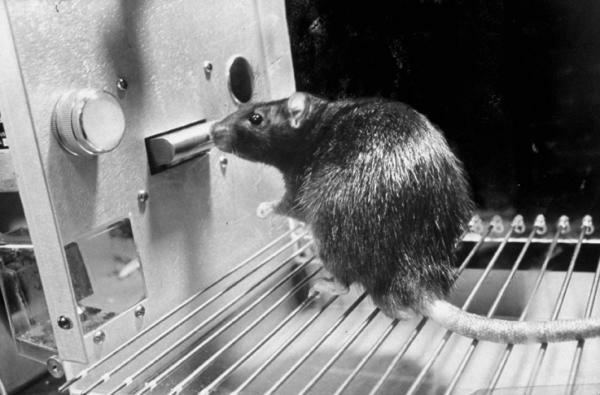
Transference and countertransference are typical concepts of psychoanalysis and are the result of Freud's first reflection on the human relationship that is created between patient and analyst. These phenomena, on the one hand, condition the course of therapy and, on the other, are an important window on the emotional and social life of the patient himself, thanks to which various information can be obtained in a direct. Therefore, in this Psychology-Online article we want to delve into the difference between transference and countertransference in psychology, clarifying what they are and helping us with some examples.
Index
- What is the transfer
- What is countertransference
- Difference between transference and countertransference
- Transfer and countertransference in daily life
What is the transfer.
On psychoanalysis, this concept introduced by Sigmund Freud indicates the process of unconscious transposition, during the analysis and on the analyst's person, of the feelings and emotions that the subject has felt
Indeed, transference is a typical phenomenon of the relationship between patient and analyst, based precisely in the conviction that the important relationships of the past characterize all relationships successive. In particular, the transference influences the expectations of the other and leads to reliving the feelings and emotions typical of the relationship with key childhood figures (typically parents). It is not an exclusive phenomenon of therapy, since it can affect any relationship with people who play an important role (both positive and negative) in the life of an individual.
In this article, we take an in-depth look at What is transference in psychology: types and examples.
What is countertransference.
Countertransference is the displacement from the analyst to the patient, a process that involves both members of the dyad, and is often difficult to distinguish the components induced by the patient and those generated by the unconscious conflicts of the clinical. It designates the emotional condition that characterizes the analyst's relationship with the patient and, in a specific sense, the displacement of the therapist's own unconscious representations to the subject. This happens in analogy with the affective dispositions that the therapist felt towards the people with whom he was in close relationship (intrafamily).
The greatest consequence of countertransference is the manifestation of empathy, which allows the patient feel understood and welcomed and the psychotherapist identify with the mood of the patient. To achieve this goal, the therapist must initially give up some of his or her needs. methodological and theoretical to listen to the patient in a mental condition free of prejudices and presuppositions "technical".
Along with displacement, countertransference is one of the motors of the therapeutic process and, therefore, essential. However, it can also create obstacles to therapy and generally must be supervised; one of the most important tasks of the therapist is to control the countertransferable feelings during the conversation with the patient. To provide a safe environment for the patient and perform the best job of interpretation, the therapist must analyze and monitor their emotions, make the most of countertransference to make each analysis unique and original and improve understanding of the patient.
Difference between transference and countertransference.
In the course of his work, Freud had identified two elements that were born and developed within the relationship: displacement and countertransference.
Through displacement, the patient would view the therapist as a symbolic "reincarnation" of someone important in his childhood, and therefore would pour out all the emotions and repressed memories of him until then. The psychoanalyst should not passively reuse this report product, but should rework it and return it to the patient. Let's see the main difference between transference and countertransference:
- The transfer It consists of a particular form of hallucination that can be experienced within more or less significant human relationships. It is a kind of open dream full of emotions and memories that we tend to project in the relationship with the other significant.
- The other side of the transference is the countertransference, true innovation and great change in the reflection on the therapy, since it refers to the emotional involvement that the analyst feels towards the patient, beyond their condition medical.
- The countertransference it is the response, endowed with the same characteristics of the transference, that the other proposes to us in response to our transference.
- The countertransference would represent the reverse of the medal, that is, the set of emotional resonances experienced within the relationship by the therapist. At first, Freud viewed countertransference as an obstacle to analytic work, but later he reevaluated it as an additional instrument for treatment.

Transfer and countertransference in daily life.
Although the words transference and countertransference are generally associated with the psychotherapeutic context, in everyday life we often experience this particular type of dynamic.
A useful example can be the experience you have when you go to a bar or any other store to consume or buy something. When we walk into the store, we have expectations about how human interaction with the manager or staff is going to go, and we are often satisfied with how things are going.
Sometimes it can happen that something has not worked: we have been stunned by something and after leaving the store we are perhaps thinking of never coming back. However brief it may have been, the experience could have been so intense that generated emotions very strong negative without knowing the why of these phenomena.
This article is merely informative, in Psychology-Online we do not have the power to make a diagnosis or recommend a treatment. We invite you to go to a psychologist to treat your particular case.
If you want to read more articles similar to Difference between transference and countertransference, we recommend that you enter our category of Clinical psychology.
Bibliography
- Gambugiati, A. (2018). Transfer and controtransfert. Recovered from: http://www.psicosintesioggi.it/psicologia/i-vissuti-del-paziente-e-del-terapeuta-transfert-e-controtransfert
- Petrini, P., Renzi, A., Casadei, A., Mandese, A. (2013). Dizionario di psychoanalisi. With elementi di psychodynamic psychiatry and dynamic psychology. Milan: Franco Angeli.
- Petta, A. M., Aragona, M. (2015). Prospettive della Modern Psychology. Rome: Crossing Dialogues.


